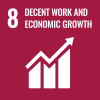To achieve the greatest possible human welfare, the Stockholm Environment Institute’s Climate and Regional Economics of Development (CRED) model calls for rapid reduction of greenhouse gas emissions to keep cumulative 21st century carbon dioxide emissions below 2,000 Gt. We explain why as some other models claim very slow emission reductions are best. We make three changes to the basic assumptions of the well-known DICE model to include the most recent estimates of economic damages from climate change, express greater concern about the well-being of future generations, and expect rich countries to invest in emissions and poverty reduction in poorer countries.
Reason, Empathy, and Fair Play: The Climate Policy Gap
Working Paper Date:
Category: Sustainable Development
Document Symbol: ST/ESA/2012/DWP/113
JEL Classification: Q54, Q56, O13, O11, F59, E17
Keywords: climate change, climate policy, equity, discounting, economic development, CRED mode
Working Paper File:
1597341743.2134.pdf
4.34 MB
 Welcome to the United Nations
Welcome to the United Nations

